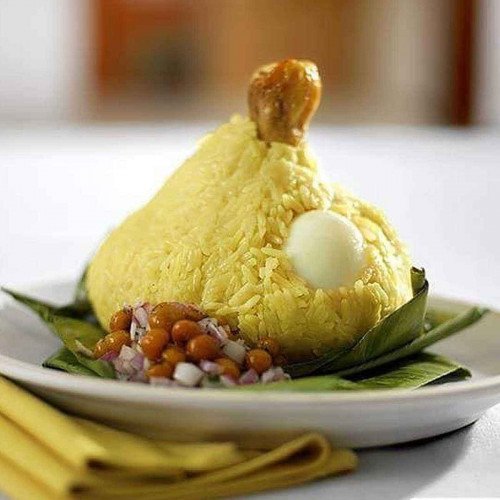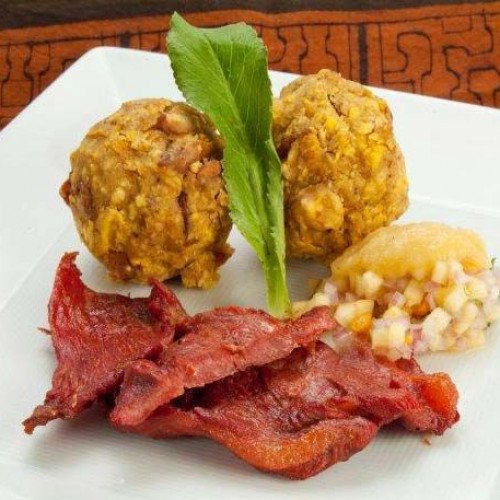Best peruvian dish

Juane
The juane is one of the main dishes of the cuisine of the Peruvian jungle and is widely consumed on June 24, the feast of St. John the Baptist (San Juan), hence the name.[1] It is known that after the arrival of the Spanish people to Incan lands, missionaries popularized the biblical account of the beheading of St. John. This dish's name could therefore be, more specifically, a reference to the head of St. John.[2] The juane would have been a food usually made for travelers, as they could be stored for long periods without spoiling. The juane usually made on the basis of rice, meat, olives, hard-boiled egg, spices among others, which is wrapped with bijao (macaw-flower or heliconia) leaves and then put to boil for about an hour and a half. Rice can be substituted with cassava, chonta, the mixture of rice and cassava, beans, among other products. Before being wrapped in the leaves, the preparation is bathed with a mixture of beaten eggs to get the "pickup" (ligue in Spanish) of food and not fall off.[3] The dish is accompanied by the customs of each region of the forest, as some people tend to accompany the tacacho, cassava, or simply boiled bananas.
Statistics for this Xoptio

Tacacho con Cecina
Tacacho is a traditional Peruvian meal that is typically served for breakfast. It originates from the Amazonas region, where the natives boil or grill the plantains, peel them, then mash them in a large wooden mortar. When mashed, the plantains are combined with lard, salt, and tiny pieces of pork rind. The combination is then rolled into a ball and served with chorizo, various freshly harvested regional vegetables, and salted dried pork known as cecina. There is also the Ecuadorian version of tacacho, known as bolón de verde. Even though this dish can easily be found in Lima, it is recommended to also try it in Madre de Dios, San Martín, and Iquitos.